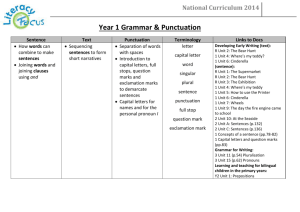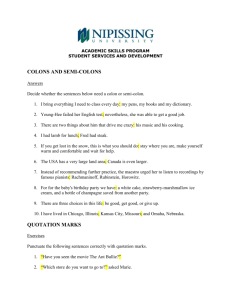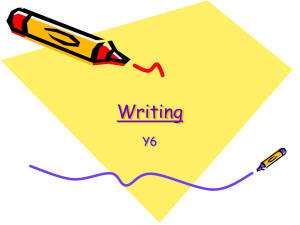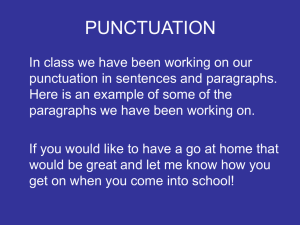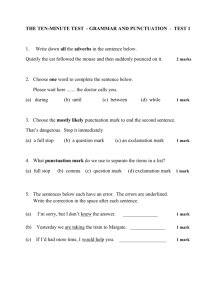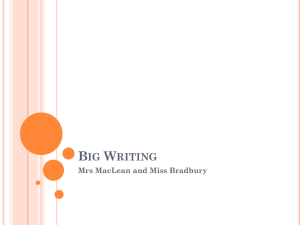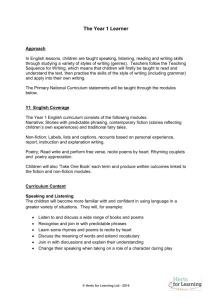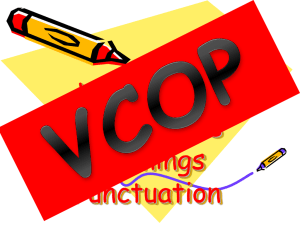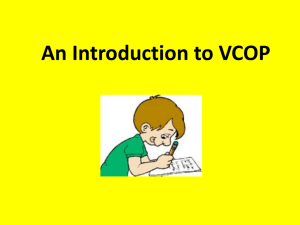Literacy presentation - Orleans Primary School
advertisement
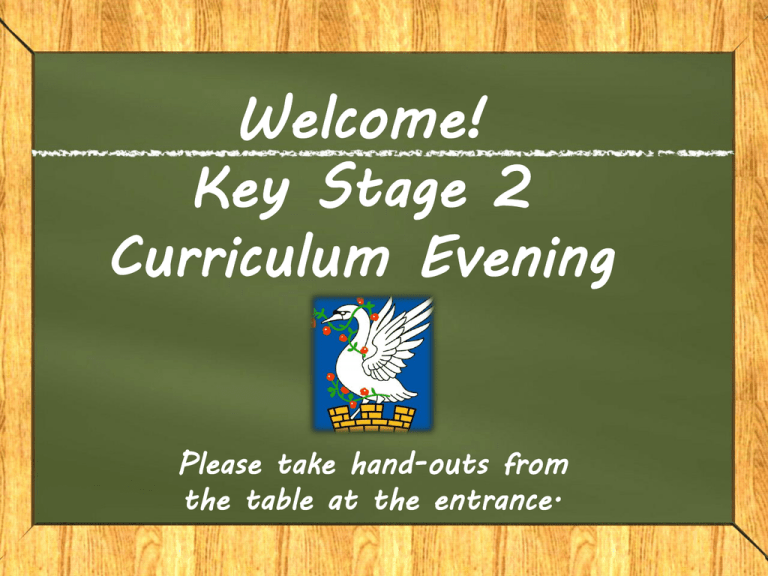
Welcome! Key Stage 2 Curriculum Evening Please take hand-outs from the table at the entrance. Writing Orleans Primary Key Stage 2 All year groups cover the following areas: Narrative- which includes play-scripts, myths and legends, stories from other cultures, traditional stories and stories with flashbacks. Non Fiction- which includes instructions, explanations, reports, recounts and persuasive texts. Poetry How do we start? We start with a stimulus, and this might be: • A book (fiction or non-fiction) • Poem • An excerpt from a film or book • A photograph or painting • A piece of music or an object Getting into it!! • We prepare the children before they write and we will do this by: • Engaging the children in discussions either in groups or pairs. • Involving the children in paired or group presentations. • Doing drama to get the children into a character or a situation. Reading • • • Children cannot write a certain text type without having experienced it first. Therefore, writing is always preceded by: Reading a text that will support their writing. Using this as a tool to teach reading comprehension. Collecting helpful words or phrases. Writing •The writing tends to come at the end of a topic which is usually in a BIG Write session •Modelled writing, shared writing, paired writing, group writing. •By this point the children are very much prepared to produce a piece of writing of a high level. •They will have learnt new words and phrases, worked on punctuation and sentence structure and studied examples and discussed them. This may mean that for some units of work, your child will have less recorded in their book than you might expect. However, the quality of what they produce will be much better! We encourage VCOP in all writing! Ask your child about VCOP! V- VOCABULARY or WOW words! C- CONNECTIVES – once, after, besides, O- OPENERS – connectives, -ly words, - P- PUNCTUATION however… ing words National Averages National Average School Average Year 3 2a 3c Year 4 3b 3a Test Time! Read through the pieces of work on your table and order them according to the level of work. Can you justify your reasons? Peer/Self Assessment Highlight VCOP used in the pieces of writing: V - Green C - Blue O - Orange P - Pink Captain Connective links longer sentences together! VCOP Sergeant Sabotage is out to spoil your sentence! The Incredible Opener starts every sentence with some oomph! Doctor Punctuation makes sure every sentence packs a punch! Violet Vocabulary has a wow word for every occasion. Level 2 These are the things that a child must include in their writing in order to achieve a particular level. The connectives ‘but’ and ‘and’ have been used to create compound sentences There is accurate use of full stops Common words have been spelt correctly Most letters have been joined and are legible An Amazing Egg In this text, the child has used Sequencing – beginning, middle, end. Related ideas with appropriate and effective vocabulary choices Simple and compound sentences Exclamation marks have been used effectively What does this child need to do next to achieve the next level in their writing? In order to achieve level 3, this child needs to become more consistent in their use of capital letters and full stops. Low level 3 In the text ‘Trapped’, the child has An awareness of a wide range of punctuation – speech marks, exclamation marks, dash. Used paragraphs Used basic vocabulary to recount the main events. Used fairly long compound sentences What does this child need to achieve a higher level 3? Begin to uses subordinate clauses Higher Level 3 This child has achieved a high level 3 in their writing by Telling the story in a logical and controlled sequence of events Used paragraphs effectively to add to the clarity of the story Use of subordinate clauses to introduce a sentence Short but effective descriptions Punctuating in a controlled manner How could this child become a level 4 writer? Experiment with more sophisticated conjunctions within their sentence, replacing and. Secure Level 4 Well constructed plot which builds suspense Events flow through paragraphs with a sense of time passing A variety of sentence structure Use of indirect speech Next step Reading It is still vitally important for your child to read every night as although they may be able to read all of the words on the page, there may be some gaps in their understanding. Dictionaries and thesauruses are a useful tool in aiding children’s understanding of words. Comprehension Let’s have a look! Go to the Dragon-maker Plum Red – Level 3/4 Where has their journey taken them so far? What did Shaun see when he looked up? What do you think will happen next? Why do you think that? How does the author build up suspense? How have they used different types of sentences to aid this? What powerful words has the author used for climbed? What descriptive language has the author used? Writing at home…. How to help your child to write • What are they interested in? Exploit it! Let them use the computer if this helps. • Talk to them about it…Children usually write better if they have discussed their ideas first. • Not everything has to be written down. Play word/sentence games whilst in the car or at bath-time! • Use a stimulus to make up a story- a picture, a piece of music, an object (like an old watch). • Set aside a special, quiet area for writing. Have different paper, pens, a dictionary, thesaurus etc. Writing…make it real! • Thank you letters • Lists- Christmas and birthdays. • Postcards • Pen-pals • E-mails to friends or relatives • Keep a diary Reading… The more your children read, the more ideas they will have for their own writing. They could have a go at writing their own story with the same characters in. Try to keep it fun! If it isn’t working, abandon it and try again another time!
